
Fire Aboard: Every Boater’s Nightmare

Although the exact cause of Tuesday morning’s roaring, three-boat fire at Santa Cruz Harbor has not yet been officially released — an unattended space heater is suspected — the stunning incident should serve as a warning to all West Coast boaters and marina operators.
In our opinion, fire aboard a boat — whether offshore or in a safe harbor — is the ultimate boater’s nightmare, as fuels can explode, crew can become trapped, and boats (especially those built of fiberglass) typically become engulfed quickly.
According to reports by KSBW TV and the Santa Cruz Sentinel newspaper, at roughly 6 a.m. Tuesday an explosion aboard a 30-ft powerboat triggered the three-boat blaze. Well-known surfboard shaper Doug Schroedel had been sleeping aboard a neighboring powerboat and was forced to flee the scene by dinghy, as his normal exit route was ablaze. A small sailboat was also lost to the inferno before local firefighters could contain it.
The subject of boat and dock fires hits close to home for this writer, as I recently experienced a fire-related scare involving the boat that I live aboard. Despite the fact that neither my boat’s in-line overload breakers nor the 30-amp AC master breaker on my electrical panel tripped, use of a relatively low-draw radiator-type heater evidently contributed to the overheating of my dockside plug-in station’s electrical apparatus. The station’s built-in 30-amp breaker did trip off, but not before an internal fire started, sending flames — at least momentarily — outside the station’s housing.
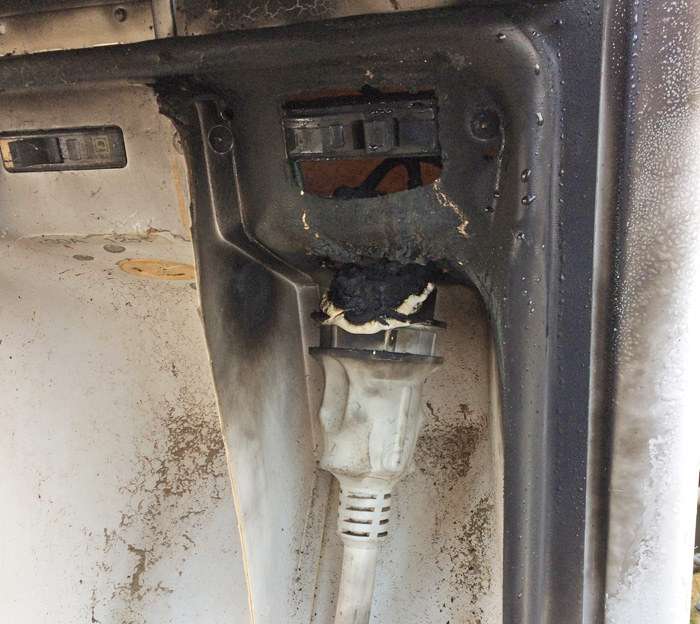
©2017Latitude 38 Media, LLC
An electrical investigation is pending, but regardless of the exact cause, the bottom line is that I could easily have lost my boat, along with many precious possessions, and my neighbors’ boats could have gone up in flames also.
What precautions can be taken?
• Don’t leave heaters on when you’re not aboard.
• Don’t use damaged or questionable shore-power cables.
• If you see signs of previous overloads (burn marks) on dockside receptacles, report them to your harbormaster.
• Have plenty of extinguishers aboard and check them often.
• Be sure you and your guests have a clear understanding of escape routes from your boat’s interior, should an onboard or dock fire occur.
Everybody’s favorite groundhog, Punxsutawney Phil, tells us these cold winter days won’t end anytime soon, so be wary of the potential for electrical overloads while trying to stay warm.
Biggest J Class Yacht Ever Launched
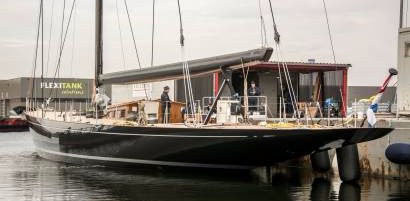
Svea, which at 143 feet is the largest J Class yacht ever built, has been completed by Vitters of Zwartsluis, Netherlands, and has just arrived in Amsterdam, reports SuperYacht Times.
The hull was commissioned by a buyer who dropped out, and was purchased for completion by Northern Californian Tom Siebel. This after negotiations between Siebel and Jim Clark for Clark’s J Class Hanuman fell through. Svea and Hanuman are among the J Class yachts expected to compete in the largest J Class yacht gathering ever this summer in Bermuda.
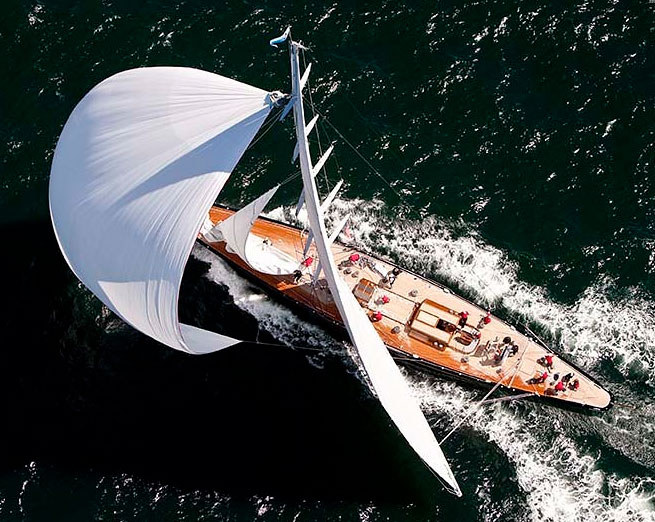
It should be spirited racing between Svea and Hanuman, for, after the sale of Hanuman fell through, a reportedly miffed Clark took almost all his team from the 100-ft Comanche to "show Siebel." It’s likely to be tough going for Svea, however, as the Kenny Read- and Stan Honey-led Hanuman has a very experienced crew, and it’s tough to get a new J Class yacht up to speed.
The original lines for Svea were drawn by Tore Holm in 1937. Hoek Design redid the design, including the deck layout for racing, and construction plans. Southern Spars provided the 53.75-meter carbon spar.
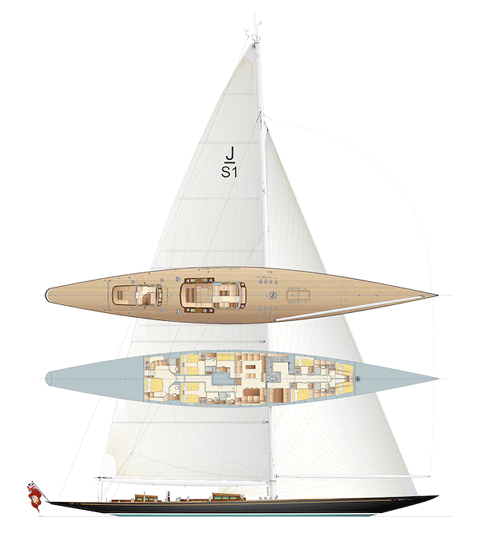
While the Swede Holm isn’t well known in the United States, he was an expert Metre racer from the 1920s to the 1950s, and had 700 boats built to his designs. He won four Olympic medals himself, and his boats won five others. The Hoek Design office says Svea should be very fast upwind.
Vitters, based in the beautiful little town of Zwartsluis, builds boats in an unusual way, using lots of subcontractors. While it might sound like a dicey concept, last year they launched the 279-ft Tripp designed Aquijo, the largest ketch in the world. Previously they’d built the 215-ft Aglaia, and refit the 218-ft Hetairos.
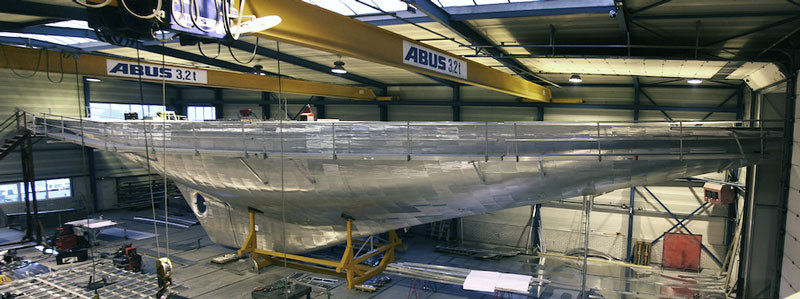
Siebel, who made his money in the software world and is now in energy and philanthropy, has a passion for sailboats. In recent times he’s owned a high-tech 45-ft carbon cat, the MOD70 trimaran Orion, and several large Swans, and has a Swan 115 under construction. He was nearly killed a few years back when he was charged by an elephant that nearly bit his foot off. The incident became the basis for a National Geographic show.
New Doublehanded Farallones Courses

©Latitude 38 Media, LLC
In a news flash of sorts, the Bay Area Multihull Association has announced that this year’s Doublehanded Farallones Race on March 18 will offer a choice of four courses, as follows:
- The Race to the Sea, aka ‘DHBL’, 8 miles to the COLREGS line between Point Bonita Light and Mile Rock
- The Race to the Bar, aka DHG7, 15.5 miles to ship channel buoys G7 and R8
- The Race to the Weather Buoy, aka DHWB, 39 miles
- The Doublehanded Farallones, aka DHF, the full 58-mile course around Southeast Farallon Island
"The intent," according to the Sailing Intructions, "is to provide a growth path for sailors in Double Handed Ocean racing through incremental steps in distance and requirements and to also provide options for skippers other than DNS or DNF as conditions warrant." Safety requirements vary depending on course, and some differences to NorCalORC recommendations make the DHF more doable for smaller boats than any other ocean race originating in San Francisco Bay — which does not mean the safety requirements are more lax.
Registration and the Sailing Instructions are now available. The ‘sweetheart deal’ entry fee of $60 ends February 14; the regular entry deadline is March 15, which is also the date of the skippers’ meeting, to be held at Oakland YC.
The awards for the 2016 race will be handed out at Aeolian Yacht Club in Alameda next Wednesday, February 15 (note new date). The bar, shirts and awards will be available at 6 p.m. with the trophy presentation at 7. To refresh your memory, Mark Eastham and Stephan Lesaffre on the F-31R Ma’s Rover were the overall winners. The plan is to review the last race and discuss the next one — sort of an unofficial pre-skippers meeting.
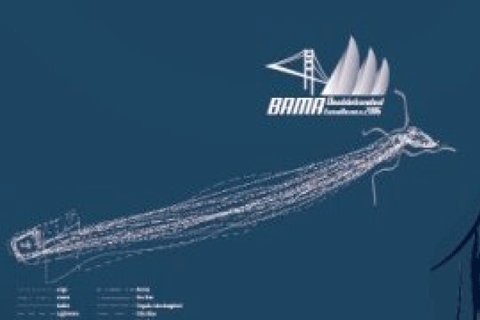
Overlapping with the BAMA meeting will be the awards presentation for the Singlehanded Sailing Society’s Three Bridge Fiasco, starting at 7:30 p.m. on the other end of Alameda at Oakland YC.
